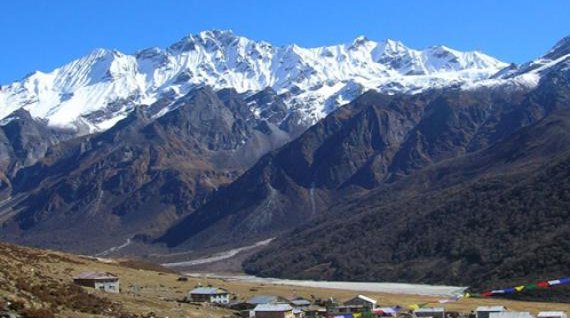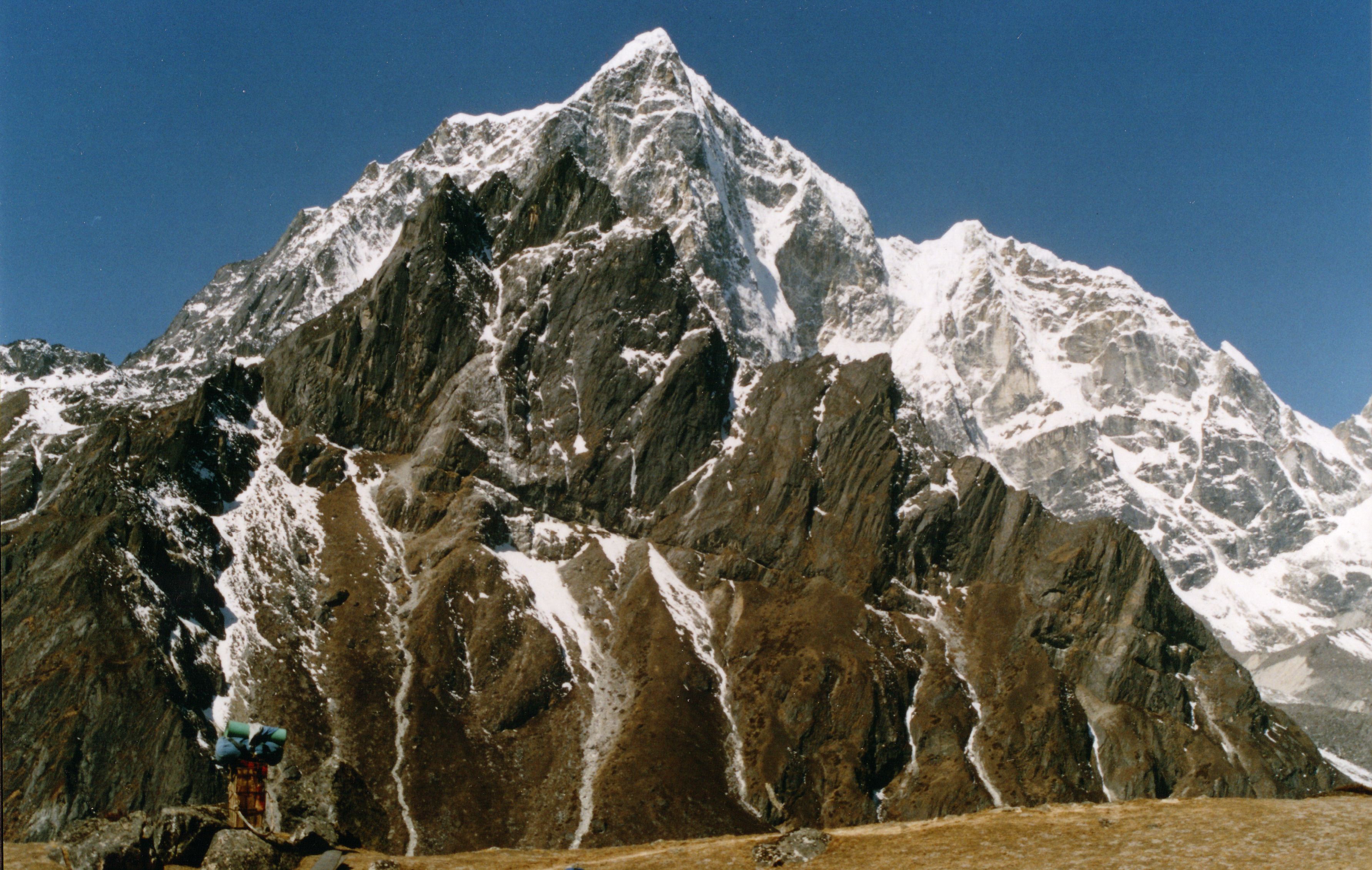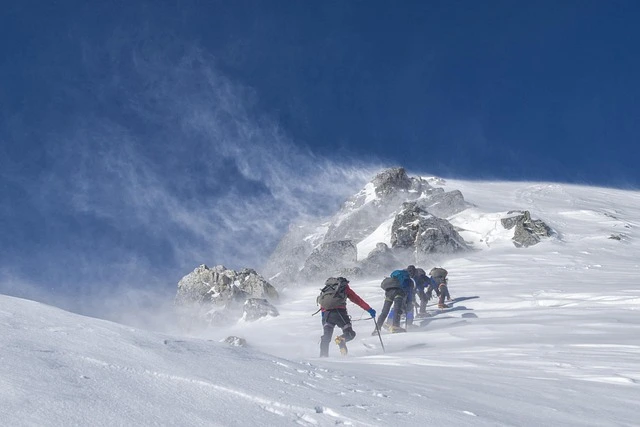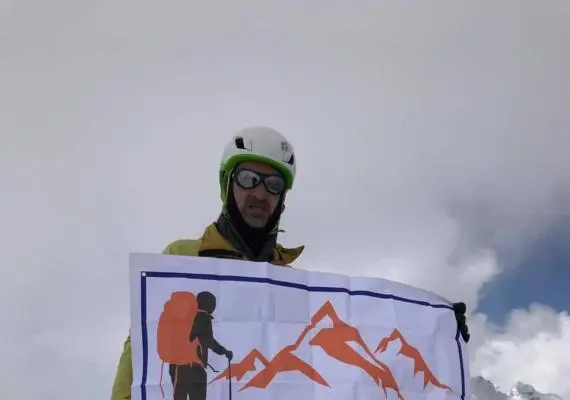The Langtang Helambu Trek stands as one of Nepal's most rewarding yet surprisingly peaceful trekking experiences, combining the dramatic alpine beauty of Langtang Valley with the cultural richness of Helambu's ancient Sherpa villages. Just a day's drive from Kathmandu, this 18-day journey takes you through rhododendron forests, sacred monasteries, and traditional settlements where time seems to have stood still, all while treating you to spectacular views of snow-capped peaks including Langtang Lirung (7,227m) and the Ganesh Himal range.
Unlike the crowded trails of Everest or Annapurna, the Langtang Helambu Trek offers an authentic Himalayan experience where you'll share the path with yak herders rather than tourist crowds. This comprehensive trek combines two distinct regions - the alpine wonderland of Langtang National Park and the culturally rich Helambu region - creating a perfect blend of natural beauty and cultural immersion that makes it ideal for trekkers seeking both adventure and meaningful connections with local communities.
Trip Highlights
- Spectacular Mountain Views: Witness breathtaking panoramas of Langtang Lirung, Ganesh Himal, Jugal Himal, and Dorje Lakpa throughout your journey
- Cultural Immersion: Experience authentic Tamang and Sherpa village life in remote settlements untouched by mass tourism
- Langtang National Park Wildlife: Spot red pandas, Himalayan black bears, and langur monkeys in their natural habitat
- Sacred Kyanjin Gompa: Visit ancient Buddhist monasteries and experience spiritual tranquility at 3,870m
- Rhododendron Forests: Trek through vibrant forests (especially stunning March-May) on this Helambu cultural trek
- Cheese Factory Visit: Taste authentic yak cheese at Kyanjin's famous cheese factory
- Off-the-Beaten-Path: Enjoy peaceful trails on this less-crowded Langtang Helambu package
- Tharepati Pass Views: Cross high mountain passes with 360-degree Himalayan vistas
- Traditional Homestays: Stay in authentic tea houses and experience warm Nepali hospitality
- Diverse Landscapes: Journey from subtropical forests to alpine meadows in a single trek
18-Day Langtang Helambu Trek Itinerary
- Day 1: Kathmandu to Syabrubesi (1,550m) - 7-8 hours drive
- Day 2: Syabrubesi to Lama Hotel (2,380m) - 6 hours trek
- Day 3: Lama Hotel to Langtang Village (3,430m) - 6 hours trek
- Day 4: Langtang Village to Kyanjin Gompa (3,870m) - 3 hours trek
- Day 5: Acclimatization day at Kyanjin - Explore Kyanjin Ri (4,773m) - 4-5 hours
- Day 6: Kyanjin Gompa to Lama Hotel - 6-7 hours trek
- Day 7: Lama Hotel to Thulo Syabru (2,230m) - 5-6 hours trek
- Day 8: Thulo Syabru to Shin Gompa (3,330m) - 3-4 hours trek
- Day 9: Shin Gompa to Gosaikunda (4,380m) - 5-6 hours trek
- Day 10: Gosaikunda to Ghopte (3,440m) via Laurebina La Pass (4,610m) - 6-7 hours
- Day 11: Ghopte to Melamchigaon (2,560m) - 6-7 hours trek
- Day 12: Rest day at Melamchigaon - Explore village and monastery
- Day 13: Melamchigaon to Tarkeghyang (2,590m) - 5-6 hours trek
- Day 14: Tarkeghyang to Sermathang (2,610m) - 3-4 hours trek
- Day 15: Sermathang to Kakani (2,070m) - 4-5 hours trek
- Day 16: Kakani to Melamchi Pul Bazaar (846m) - 4-5 hours trek
- Day 17: Melamchi Pul Bazaar to Kathmandu - 3 hours drive
- Day 18: Departure day
Permits and Costs for Langtang Helambu Trek
Understanding the permit requirements and costs is essential for planning your Langtang National Park adventure. The good news is that this trek offers excellent value compared to other major Nepal treks.
Required Permits:
- Langtang National Park Permit: NPR 3,000 for foreigners ($23 USD) / NPR 1,500 for SAARC nationals
- TIMS Card Fee: NPR 2,000 for individual trekkers ($15 USD) / NPR 1,000 for group trekkers
- Shivapuri National Park Permit (for Helambu section): NPR 1,000 for foreigners ($8 USD)
Daily Costs Breakdown:
- Accommodation: NPR 500-1,500 per night (basic to comfortable tea houses)
- Meals: NPR 1,500-2,500 per day (breakfast, lunch, dinner)
- Guide Services: $25-30 USD per day (mandatory in some areas)
- Porter Services: $15-20 USD per day (carries up to 20kg)
- Miscellaneous: NPR 500-1,000 for hot showers, charging, snacks
Total Package Costs:
- Budget Package: $1,299-1,499 (basic accommodation, meals, guide)
- Standard Package: $1,599-1,899 (better accommodation, experienced guide)
- Comfort Package: $2,099-2,499 (best available lodges, senior guide, porter included)
Book your Langtang Helambu package with Himalayan Hero Adventure for guaranteed best prices and experienced local guides who know every trail intimately.
Cost Differences for Indians vs Other Foreigners:
Indian nationals enjoy special rates as SAARC members:
- Langtang National Park permit: 50% discount
- No TIMS card required for Indian citizens
- Same accommodation and meal costs
- Total savings: Approximately $20-30 on permits
Trek Difficulty and Fitness Requirements
The Langtang Helambu Trek is rated as moderate to challenging, making it accessible to reasonably fit trekkers while still providing a genuine Himalayan challenge. Understanding the difficulty level helps you prepare adequately for this incredible journey.
Physical Demands:
- Daily Walking: 4-7 hours on average, with some days extending to 8 hours
- Altitude Range: 846m to 4,610m (Laurebina La Pass)
- Terrain: Well-established trails with some steep sections
- Technical Difficulty: No technical climbing required
- River Crossings: Several suspension bridges (sturdy and safe)
Altitude Considerations:
- Gradual Ascent: The itinerary allows proper acclimatization
- Highest Overnight Stop: Gosaikunda at 4,380m
- Acclimatization Day: Built-in rest day at Kyanjin Gompa
- Altitude Sickness Risk: Moderate - proper acclimatization reduces risk significantly
Fitness Preparation:
- Cardiovascular Training: 3-4 months of regular hiking or cardio
- Strength Training: Focus on legs and core strength
- Practice Hikes: Weekend hikes with loaded backpack
- Stair Climbing: Excellent preparation for uphill sections
- Flexibility: Yoga or stretching helps prevent injuries
Who Can Do This Trek:
- Age Range: Successfully completed by trekkers aged 10-70+
- Experience Level: Previous trekking helpful but not mandatory
- Health Requirements: Good general health, no serious heart/lung conditions
- Mental Preparation: Positive attitude and flexibility essential
Best Season to Trek Langtang and Helambu
Choosing the right season dramatically impacts your trekking experience. The Langtang Valley and Helambu region offer distinct advantages in different seasons.
Spring Season (March-May):
- Weather: Clear mornings, occasional afternoon clouds
- Temperature: 10-20°C at lower elevations, -5 to 10°C at higher altitudes
- Highlights: Rhododendron forests in full bloom, crystal-clear mountain views
- Wildlife: Best time for spotting red pandas and birds
- Crowds: Moderate - busier than autumn but manageable
Autumn Season (October-November):
- Weather: Most stable weather window with minimal precipitation
- Temperature: 5-15°C at lower elevations, -10 to 5°C at higher altitudes
- Highlights: Clearest mountain views, perfect photography conditions
- Festivals: Experience Dashain and Tihar celebrations in villages
- Crowds: Peak season but still less crowded than Everest region
Monsoon Season (June-September):
- Weather: Daily rainfall, usually in afternoons
- Temperature: Warmer but humid conditions
- Highlights: Lush green landscapes, dramatic waterfalls
- Challenges: Slippery trails, possible flight delays
- Advantages: Fewer tourists, lower prices, authentic village life
Winter Season (December-February):
- Weather: Cold but generally clear
- Temperature: -5 to 10°C at lower elevations, -20 to -5°C at higher altitudes
- Highlights: Snow-covered landscapes, solitude on trails
- Challenges: Some high passes may be blocked, very cold nights
- Suitable For: Experienced cold-weather trekkers
Essential Packing List and Gear Tips
Proper gear makes the difference between an enjoyable trek and a challenging ordeal. Here's your comprehensive packing guide for the Langtang National Park trek.
Clothing Essentials:
- Base Layers: 2-3 moisture-wicking thermal sets
- Trekking Shirts: 3-4 quick-dry shirts (long and short sleeve)
- Trekking Pants: 2 pairs plus 1 waterproof pair
- Insulation: Down jacket (can rent in Kathmandu for $1/day)
- Fleece Jacket: Mid-layer warmth
- Rain Gear: Quality rain jacket and pack cover essential
Footwear and Accessories:
- Trekking Boots: Broken-in, ankle-support boots crucial
- Camp Shoes: Lightweight shoes for evenings
- Socks: 5-6 pairs merino wool or synthetic
- Gaiters: Useful for snow sections
- Trekking Poles: Highly recommended for knee protection
Daypack Essentials:
- Backpack: 40-50L for porter, 20-30L daypack for you
- Hydration: 2-3L water capacity (bottles or hydration system)
- Water Purification: Tablets or SteriPEN
- Snacks: Energy bars, nuts, chocolate
- Sun Protection: SPF 50+, lip balm, sunglasses
Technical Gear:
- Sleeping Bag: -15°C rated (rent available)
- Headlamp: Plus spare batteries
- Power Bank: 20,000mAh recommended
- Charging Cables: Bring extras
- Camera: Extra batteries drain quickly in cold
Personal Care Items:
- Toiletries: Biodegradable soap preferred
- Medications: Personal prescriptions plus basic first aid
- Altitude Medication: Diamox (consult doctor)
- Wet Wipes: For days without shower facilities
- Toilet Paper: Not always provided at tea houses
Pro Tip: Himalayan Hero Adventure (himalayanhero.com) provides detailed gear lists and offers equipment rental services in Kathmandu, saving you luggage space and money.
Culture and Wildlife of Langtang Helambu Region
The cultural richness and biodiversity of this trek rivals its mountain scenery, offering encounters that touch both heart and soul.
Tamang Culture in Langtang:
- Heritage: Tibetan-influenced culture with unique traditions
- Architecture: Stone houses with wooden carved windows
- Festivals: Losar (New Year) celebrations with masked dances
- Handicrafts: Hand-woven fabrics and traditional jewelry
- Hospitality: Butter tea and warm welcomes in every village
Sherpa Communities in Helambu:
- Monasteries: Tarkeghyang and Melamchigaon house ancient artifacts
- Buddhism: Daily prayers and spinning prayer wheels
- Traditional Dress: Colorful traditional costumes during festivals
- Language: Sherpa dialect mixed with Nepali
- Livelihood: Yak herding and subsistence farming
Langtang National Park Wildlife:
- Red Panda: Elusive but present in bamboo forests
- Himalayan Black Bear: Occasionally spotted in forests
- Langur Monkeys: Common in lower elevations
- Snow Leopard: Rare but present in higher regions
- Birds: Over 250 species including Himalayan Monal
Flora Diversity:
- Rhododendron Forests: 30+ species bloom March-May
- Alpine Meadows: Wildflowers carpet summer meadows
- Medicinal Plants: Traditional herbs used by locals
- Oak and Pine: Lower elevation forests
- Bamboo Groves: Red panda habitat zones
Cultural Etiquette:
- Monastery Visits: Remove shoes, walk clockwise
- Photography: Ask permission before photographing people
- Greetings: "Namaste" with joined palms
- Respect: Don't touch religious artifacts
- Dress Code: Modest clothing in villages
Accommodation and Tea Houses Along the Route
Understanding accommodation options helps set realistic expectations for your Langtang Helambu package adventure.
Tea House Standards:
- Basic Lodges: Twin beds, shared bathrooms, common dining area
- Standard Lodges: Better bedding, some attached bathrooms
- Comfort Lodges: Best available, private bathrooms (limited locations)
- Heating: Central dining areas heated by stove
- Hot Showers: Available for NPR 200-500 (solar or gas)
Accommodation by Region:
Langtang Valley Tea Houses:
- Lama Hotel: Multiple options, riverside locations
- Langtang Village: Rebuilt after 2015 earthquake, modern facilities
- Kyanjin Gompa: Several lodges, some with mountain views
- Facilities: Basic but clean, improving annually
- Food Quality: Good variety, fresh ingredients
Helambu Region Lodges:
- Melamchigaon: Traditional houses converted to lodges
- Tarkeghyang: Community-run lodges supporting local development
- Sermathang: Comfortable lodges with valley views
- Cultural Touch: More traditional architecture preserved
- Homestay Options: Available in some villages
Booking and Availability:
- Advance Booking: Not required except peak season
- Room Rates: NPR 500-1,500 per room
- Single Supplements: Usually double the twin-share rate
- Group Accommodations: Dormitory style available
- Best Rooms: Early arrivals get mountain-view rooms
Meal Options:
- Breakfast: Porridge, eggs, Tibetan bread, pancakes
- Lunch/Dinner: Dal bhat, noodles, momos, pasta
- Beverages: Tea, coffee, hot chocolate, soft drinks
- Special Diets: Vegetarian/vegan easily accommodated
- Food Safety: Stick to cooked foods and boiled water
Health and Safety Considerations
Your safety is paramount on the Langtang Helambu Trek. Understanding potential risks and preparations ensures a worry-free adventure.
Altitude Sickness Prevention:
- Ascend Gradually: Our itinerary includes proper acclimatization
- Stay Hydrated: Drink 3-4 liters water daily
- Avoid Alcohol: Especially during ascent days
- Listen to Your Body: Headaches and nausea are warning signs
- Medication: Consider Diamox after consulting your doctor
Common Health Issues:
- Stomach Problems: Stick to bottled or purified water
- Colds: Common due to temperature changes
- Blisters: Prevention with proper boots and socks
- Sunburn: High altitude sun is intense
- Dehydration: Easy to occur without noticing
Emergency Procedures:
- Evacuation Plans: Helicopter rescue available if needed
- Insurance Requirement: Must cover up to 6,000m elevation
- Communication: Mobile coverage improving but sporadic
- First Aid: Guides carry basic supplies
- Nearest Hospitals: Kathmandu for serious issues
Safety Equipment:
- Guide Equipment: First aid kit, pulse oximeter, communication device
- Personal Items: Whistle, emergency blanket recommended
- Group Gear: Comprehensive medical kit with each group
- Satellite Phone: Available with premium packages
Photography Tips for Langtang Helambu Trek
Capture the magic of your Himalayan journey with these photography insights tailored to the trek's unique opportunities.
Best Photography Spots:
- Kyanjin Ri Viewpoint: 360-degree panorama at sunrise
- Laurebina La Pass: Dramatic mountain vistas
- Gosaikunda Lake: Sacred lake reflections
- Tarkeghyang Monastery: Cultural photography paradise
- Langtang Village: Rebuilt architecture against mountain backdrop
Equipment Recommendations:
- Camera Body: Weather-sealed preferred
- Lenses: Wide angle (mountain vistas), telephoto (wildlife)
- Batteries: 3-4 spare sets minimum
- Memory Cards: 64GB+ recommended
- Cleaning Kit: Dust is constant companion
Timing and Lighting:
- Golden Hour: 6:00-7:30 AM for best mountain glow
- Blue Hour: Evening shots of villages
- Weather Windows: Clearest views before 10 AM
- Cultural Shots: Morning prayer times
- Wildlife: Early morning in forests
Comparing Langtang Helambu with Other Nepal Treks
Understanding how this trek compares helps you make an informed choice for your Himalayan adventure.
Versus Everest Base Camp:
- Crowds: 70% fewer trekkers on Langtang trails
- Cost: 40% less expensive overall
- Culture: More authentic village experiences
- Difficulty: Slightly easier with lower maximum altitude
- Access: Road access vs. expensive flights
Versus Annapurna Circuit:
- Duration: Shorter trek fits tighter schedules
- Variety: Similar landscape diversity
- Altitude: Lower maximum elevation
- Logistics: Easier to organize independently
- Views: Equally spectacular but different peaks
Unique Advantages:
- Accessibility: Closest major trek to Kathmandu
- Combination: Two regions in one trek
- Wildlife: Better chances of fauna sightings
- Culture: Less commercialized villages
- Value: Best mountain views per dollar spent
Sustainable Tourism and Community Impact
Your trek directly supports local communities still recovering from the 2015 earthquake.
Community Benefits:
- Local Employment: Guides, porters, lodge staff
- Village Development: Tourism income funds schools and health posts
- Cultural Preservation: Economic incentive to maintain traditions
- Women's Empowerment: Many lodges run by women's groups
- Youth Opportunities: Alternative to urban migration
Responsible Trekking:
- Waste Management: Carry out all non-biodegradable waste
- Water Usage: Use purification rather than buying bottles
- Cultural Respect: Follow local customs and dress codes
- Fair Wages: Ensure porters and guides receive fair compensation
- Local Purchases: Buy handicrafts directly from artisans
Training Program for Langtang Helambu Trek
Proper physical preparation ensures you enjoy every moment rather than struggling with fitness.
3-Month Training Schedule:
Month 1 - Building Base Fitness:
- Week 1-2: 30-minute walks, 3x per week
- Week 3-4: 45-minute walks with hills, 4x per week
- Strength: Basic bodyweight exercises 2x per week
- Flexibility: 15-minute daily stretching
Month 2 - Increasing Intensity:
- Week 5-6: 1-hour hikes with daypack, 4x per week
- Week 7-8: 2-hour weekend hikes with elevation gain
- Strength: Add weighted squats and lunges
- Cardio: Include cycling or swimming sessions
Month 3 - Trek Simulation:
- Week 9-10: Back-to-back hiking days on weekends
- Week 11-12: Full day hikes with loaded backpack
- Altitude: If possible, hike at elevation
- Taper: Reduce intensity final week before departure
Final Preparations and Last-Minute Tips
As your departure approaches, these final preparations ensure a smooth start to your adventure.
One Month Before:
- Visa: Arrange Nepal visa (on arrival available)
- Flights: Confirm international flights
- Insurance: Purchase comprehensive trekking insurance
- Health Check: Visit doctor for altitude consultation
- Gear Check: Test all equipment
One Week Before:
- Money: Exchange currency or confirm ATM cards work
- Documents: Copy passport, insurance, permits
- Medications: Pack prescriptions with extras
- Emergency Contacts: Share itinerary with family
- Weather Check: Monitor forecast for packing adjustments
In Kathmandu:
- Final Gear: Rent or buy missing items
- Permit Processing: Your operator handles this
- Meet Your Guide: Pre-trek briefing
- Local SIM Card: For emergency communication
- Rest Well: Don't exhaust yourself sightseeing
Why Choose Langtang Helambu Trek
This remarkable journey offers everything that makes Nepal trekking special - towering peaks, ancient cultures, rare wildlife, and spiritual encounters - without the crowds and commercialization of more famous routes. The combination of Langtang's alpine grandeur and Helambu's cultural authenticity creates an experience that satisfies both adventure seekers and cultural enthusiasts.
The trek's accessibility from Kathmandu eliminates expensive internal flights, while the moderate difficulty level opens this Himalayan adventure to a wider range of trekkers. Recent infrastructure improvements following the 2015 earthquake have created better trails and lodges while maintaining the region's authentic character.
Most importantly, your trek directly supports communities still rebuilding their lives, making your adventure a meaningful contribution to local development. Every meal purchased, every night spent in a tea house, and every guide hired helps families recover and thrive.
Ready to Begin Your Himalayan Journey?
The Langtang Helambu Trek awaits - a perfect blend of natural beauty, cultural immersion, and personal challenge that creates memories lasting a lifetime. Don't let another season pass wondering what lies beyond those mountain horizons.
Book your Langtang Helambu Trek with Himalayan Hero Adventure today. Our experienced team ensures your journey is safe, comfortable, and unforgettable. With 15+ years of experience, 100% safety record, and commitment to responsible tourism, we're your trusted partner for this incredible Himalayan adventure.
Contact us now for early-bird discounts and secure your preferred dates. The mountains are calling - it's time to answer!





